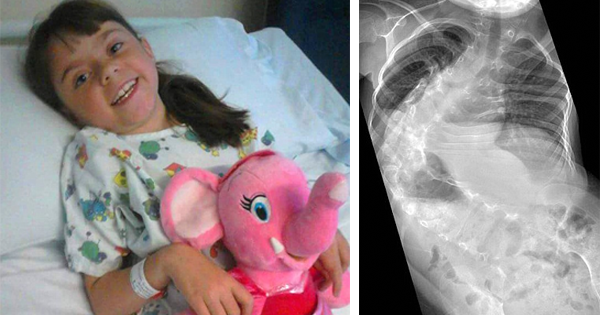Before now-11-year-old Ellisha Hockham was born, her doctors identified that she would be born with neuromuscular scoliosis, a condition where brain, spinal cord, and muscle disorders cause the spine to curve unnaturally.
The doctors didn’t think Ellisha would live past the age of ten because her condition was so serious and offered her parents the choice to have an abortion. But Ellisha’s parents decided against it.
At birth, it was evident that Ellisha’s spine was unnaturally curved. Her doctors gave her just 18 months to live; they predicted that her spine would crush her heart.
But again, Ellisha’s parents refused. “We were devastated,” Mrs. Hockham admitted, “but luckily doctors were able to slow her curve down and lengthen her spine which ultimately saved her life.”
When Ellisha was born, her spine was already curved 80 degrees. Her parents and doctors watched anxiously as the curve continued to increase. Ellisha’s doctors finally decided to operate on the young girl.
She was only 10 months old at the time of her first operation.
Over the course of the following six years, Ellisha went through a second surgery and spent her life in a plaster cast, which hoped to keep her curve from progressing even further.
Unfortunately, by the time Ellisha was six, her curve measured 170 degrees.

That was when her doctors intervened and began performing more and more operations on Ellisha in hopes of correcting her spine enough so she could live a healthy, normal life.
Ellisha is now 11 years old, and she has gone through 12 surgeries, all of which aimed to correct the curvature of her spine. During some of the surgeries, her doctors inserted titanium rods along her spine to help hold the bone straight; following surgeries lengthened the rods to allow room for her growth.
Thankfully, Ellisha’s condition is far more stable now, and she has two titanium rods, eight screws, and four hooks to maintain the status of her spine – but she is already on the waiting list for her 13th surgery, which will once again lengthen her rods for continued growth.
Although Mrs. Hockham is heartbroken every time she has to send her daughter to the operating room, she is immensely grateful for all the work the doctors have done.
“Ellisha has just started secondary school, something we never thought we would see and despite needing her wheelchair from time to time because she can't walk long distances, she is doing great.
“All of her surgeries have been such a success which means doctors are able to manage her curve and she will pretty much live a normal life.”





